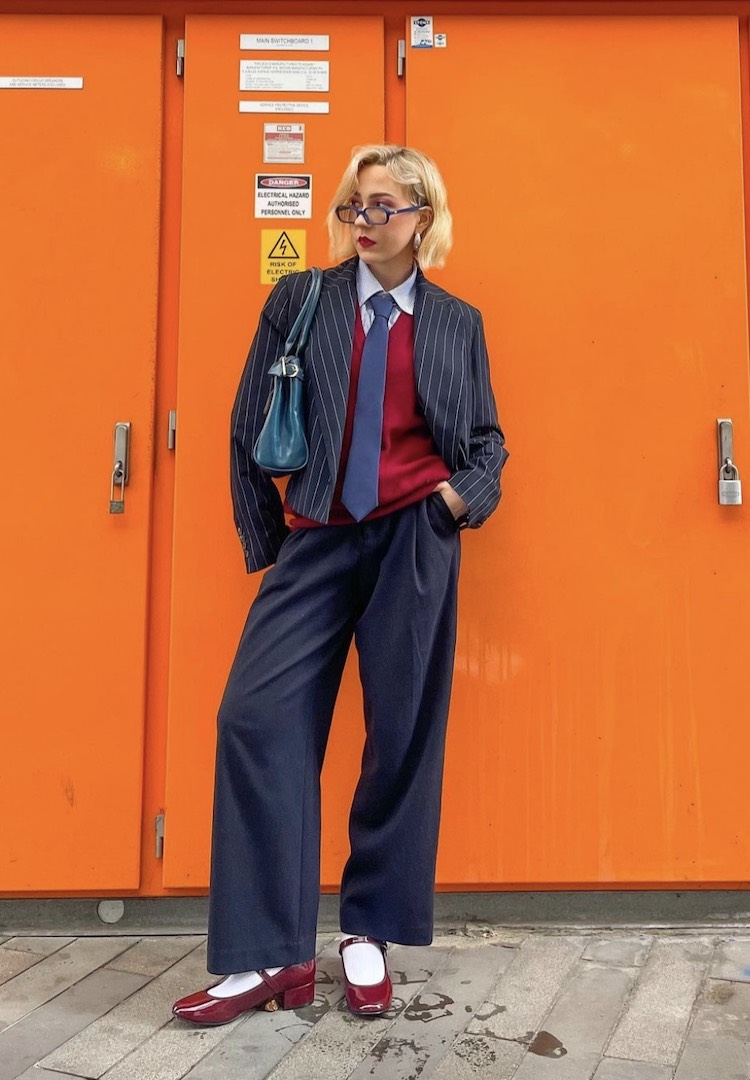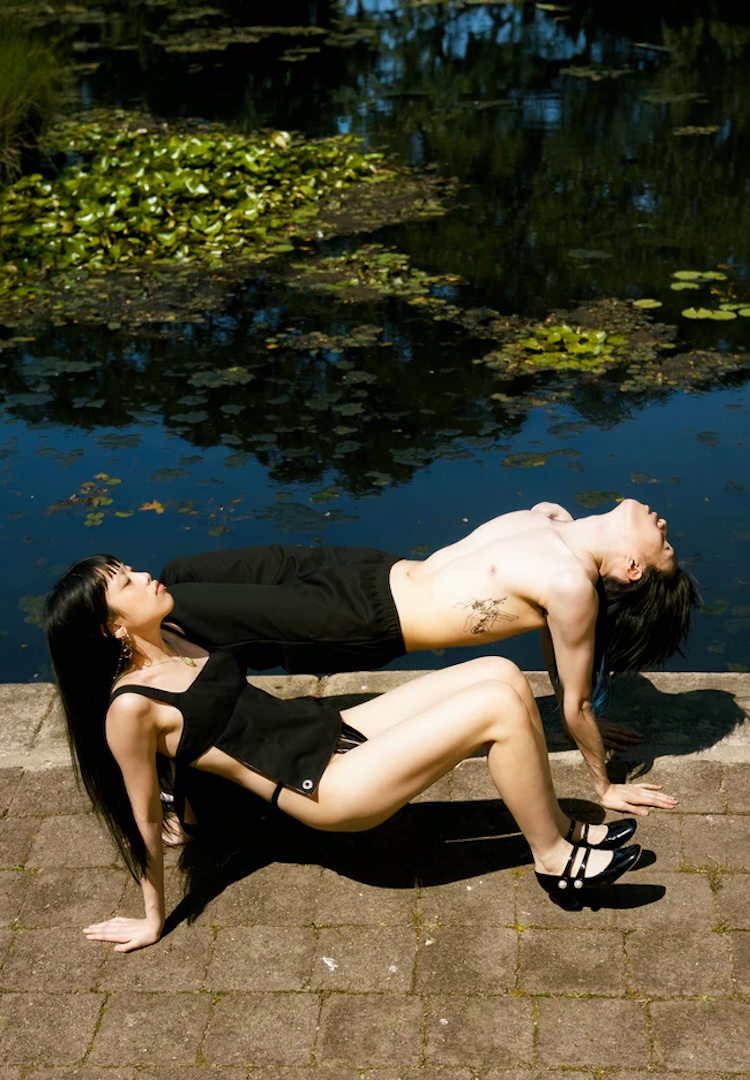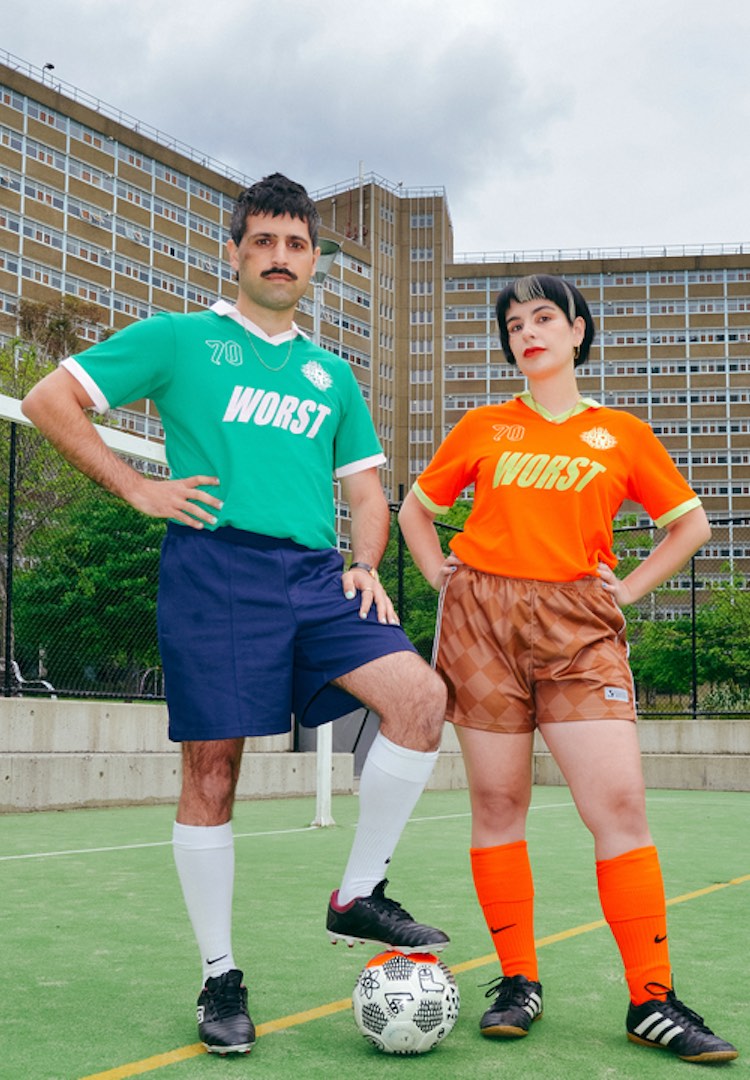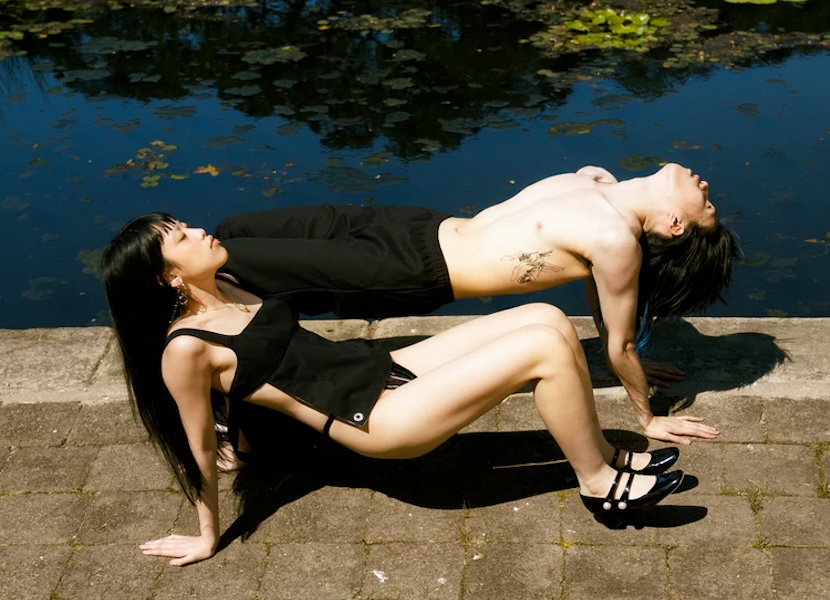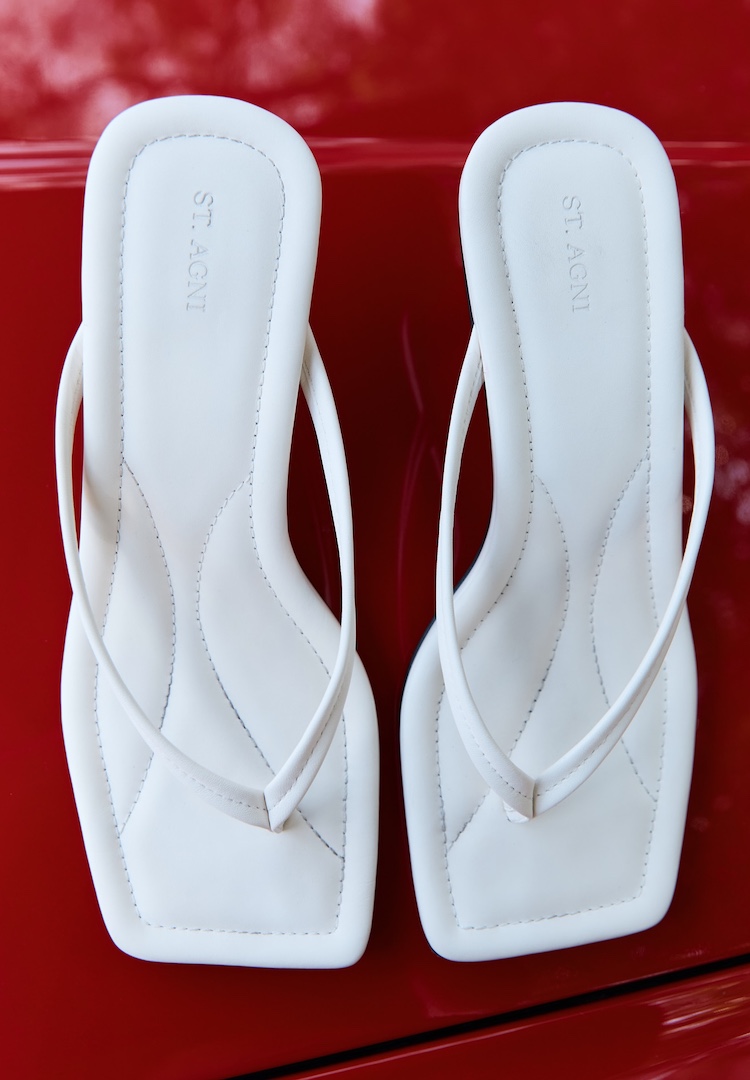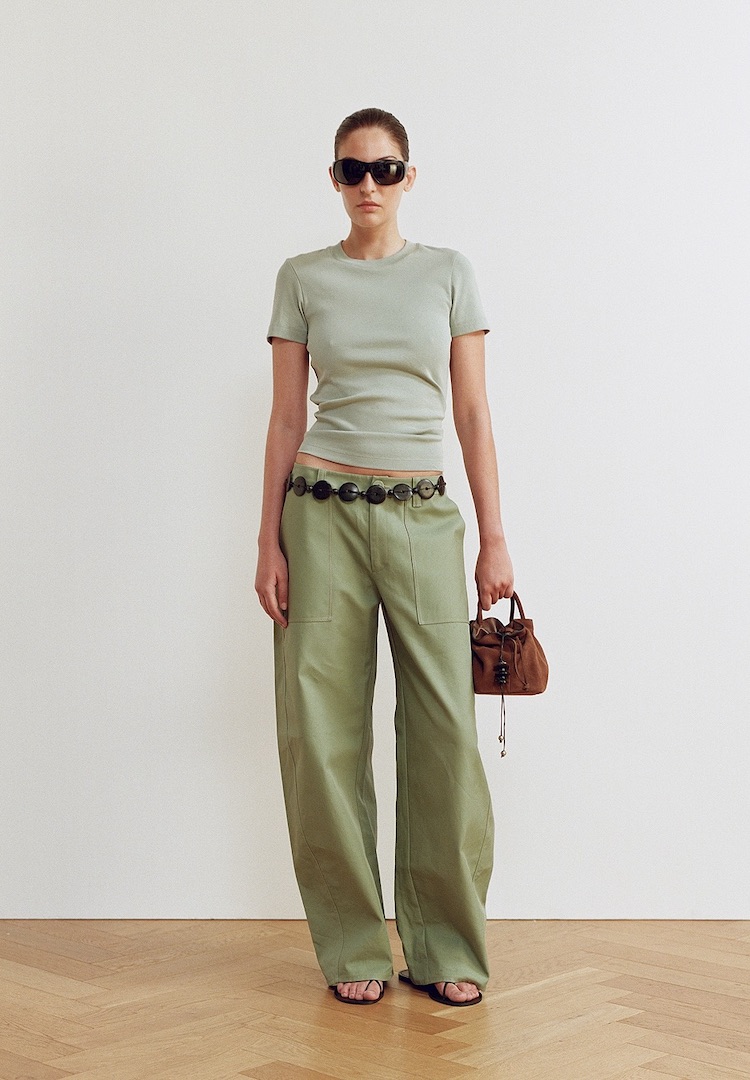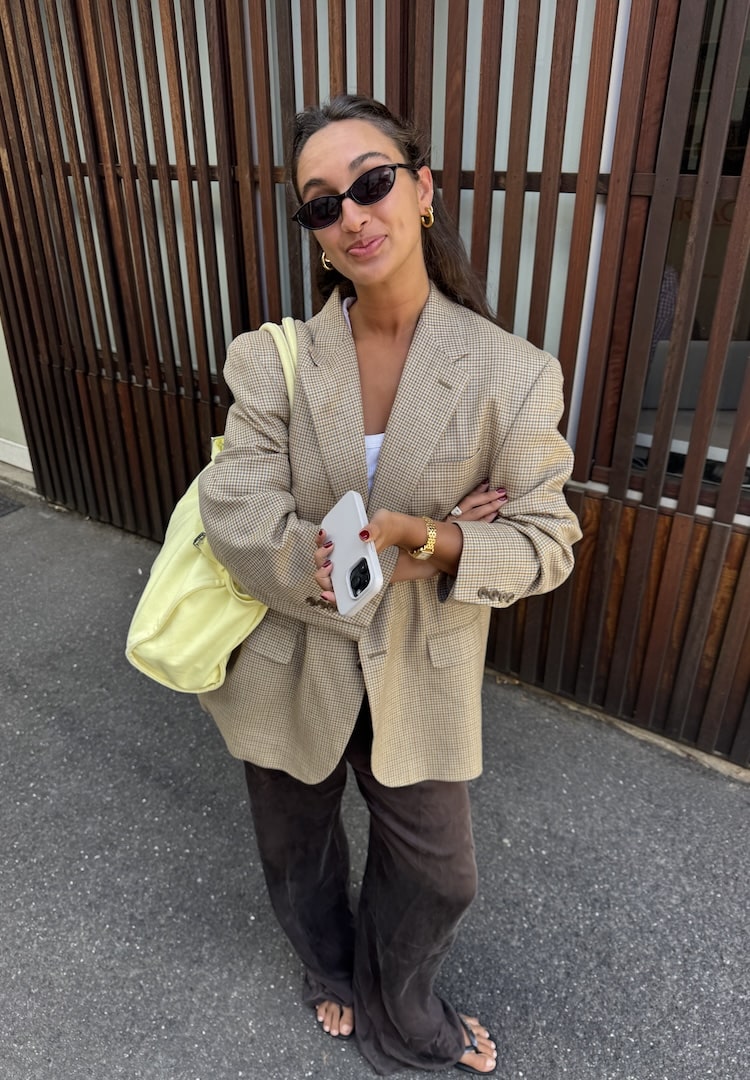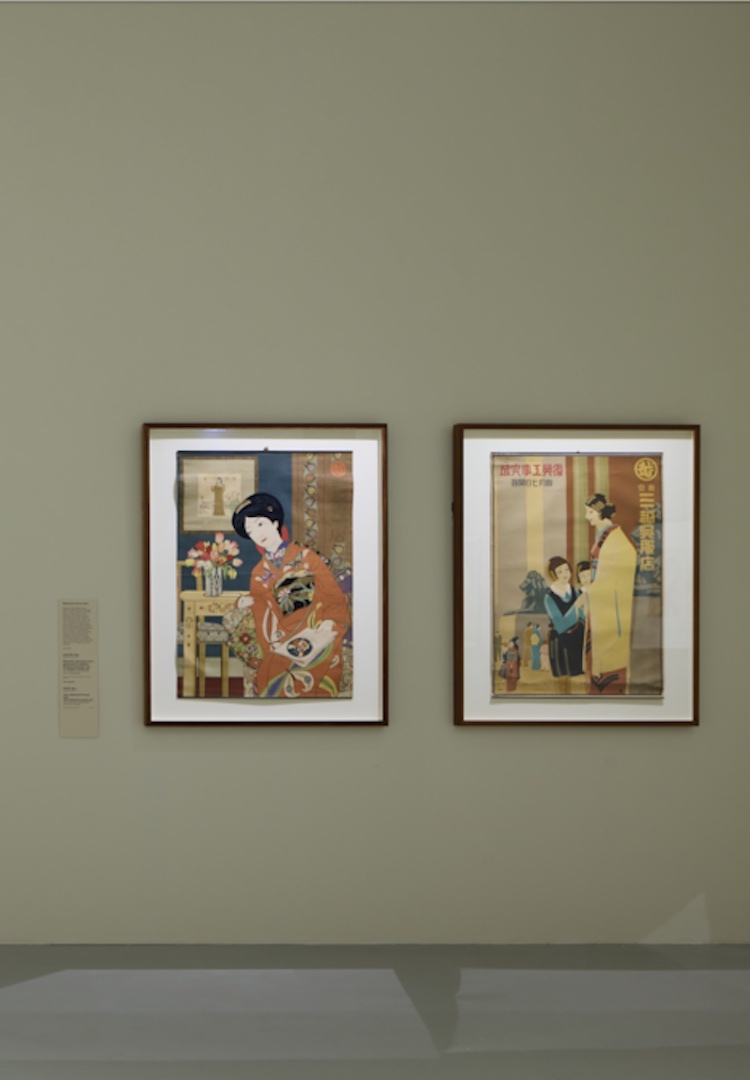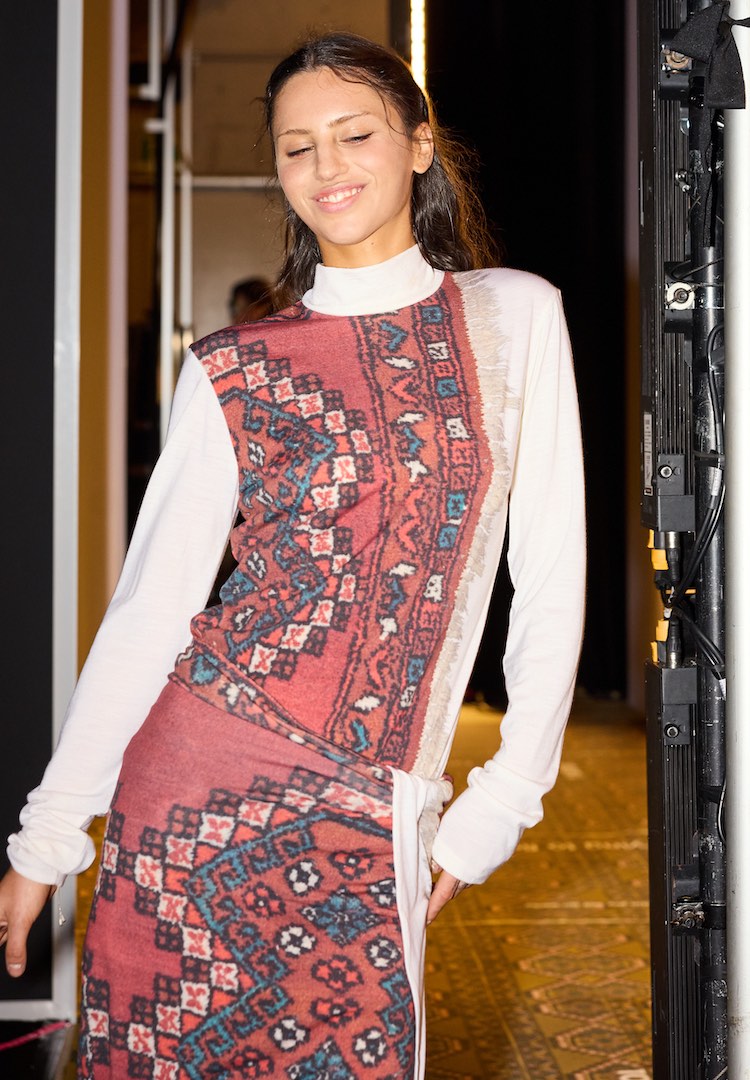Itadaki is the Sydney-based label inspired by Japanese streetwear
PHOTOGRAPHY BY SYLVESTRE
WORDS BY MOLLY KEOGH
“Clothing is like a second skin and so ultimately, I want people to have access to pieces that actually make them feel good and comfortable.”
Australian-Japanese designer Mia Yoneda’s journey into the fashion world is a story of resilience and creativity. Despite initial criticism of her early designs – such as reusable fabric face masks, which were once dismissed as “ridiculous” by her university lecturer, or her debut puff pants, which sold only one pair in three hours – Mia’s designs are now worn all around the world.
Shortly after Mia first designed what would become her most pivotal design, Covid hit and Mia’s facemasks became her ticket into the fashion industry. What began as mask-making evolved into a full-time project, leading to the transformation of her label into Itadaki in 2022.
For more fashion news, shoots, articles and features, head to our Fashion section.
Drawing on inspiration from Japanese street silhouettes, Mia’s designs blend the intricate craftsmanship of traditional Japanese wear, “while also nodding to the chaotic and stark way of dressing and layering akin to the well-loved Harajuku girls.”
Here, Mia shares the journey of her label and explains how her clothing serves as a medium for personal expression – not just for herself, but for others to celebrate and embrace their own unique cultures and authentic selves.
Tell us about you. What’s your fashion background?
I have always been quite particular about clothing and what I want to wear. When I was little I would kick and scream if I was put in something that I didn’t like. Mum loves telling this story of how this one time when I was a toddler, we were at the shops and I fell in love with these pairs of overalls, she refused to buy them for me so I stripped down naked in the shopping mall and got changed into them. She eventually gave in and scanned me at checkout, Maggie Simpson style.
View this post on Instagram
It wasn’t until Covid that I started my first brand Itadakimasks in 2019 while studying fashion design at Billy Blue in Ultimo. It was pre-Covid, and I remember there was an assignment where we had to design something innovative and practical out of textile waste. For the project, I developed my prototype of a reusable fabric face mask. I remember receiving the feedback from my lecturer at the time and she told me it was such a “ridiculous” idea and that “no one would ever willingly wear one”.
Little did I know at the time that the world was on the cusp of a global pandemic and that this prototype was my gateway into the fashion world. After losing my local pub job to the gruelling lockdowns while also dropping my fashion degree, mask-making quickly became my full-time gig. After almost two years of Itadakimasks, I eventually moved on to clothing and hence ditching the ‘masks’, began Itadaki properly in 2022.
How did the label get started? Talk us through the process and the challenges.
Itadaki began as a way to express my Japanese heritage. I am half Japanese and half Australian, but it wasn’t until I lived there in 2018 that I found a much deeper connection and appreciation for my culture. I started Itadaki as a way to essentially feel closer to my Japanese roots and immerse myself in the culture while not actually being present in it. I adored Japanese fashion but found that the silhouettes and styles accessible over in Japan weren’t really available in Australia where I lived.
View this post on Instagram
I wanted to create something authentic to my culture and I wanted people to have access to this unique style of fashion. I started off by making everything by hand and was running on a made-to-order basis. Making everything myself was extremely time-consuming, but time was on my side and it ensured that I did not compromise on my values. Since then, I now work with local pattern makers, cutters and machinists to create my pieces locally in small batches. Growing this way has really helped me to only produce if there is a demand for my pieces.
What were you trying to achieve from the project at the time?
In the early days of the brand, Itadaki was very self-fulfilling and a way for me to personally connect to Japan. Since then the brand has developed and grown beyond the initial means for personal self-expression and rather as a way for others to cherish themselves and their own, unique culture. Confidence dressing has also been on the forefront of my mind for a while now.
At the end of the day, I create clothing that I am proud of and I simply want to wear; it makes me feel more confident. Every time I visit Japan I see some of the most eccentric and intriguing outfits being effortlessly pulled off. You can seriously make anything work if you want it to work. Confidence is everything.
How has this evolved and what are you trying to communicate through the brand now?
View this post on Instagram
I am always working on expanding my fit and size range as inclusivity is a massive part of the brand and culture I want to create. With my designs being androgynous, they are not limited to single-body archetypes and are actually designed to be worn by all different people. Clothing is like a second skin and so ultimately, I want people to have access to pieces that actually make them feel good and comfortable. I don’t care if it’s not Itadaki but wear clothes that make you feel yourself, and if it happens to be Itadaki then that is a huge win!
How would you describe your label to someone who’s never seen it before?
Geisha meets Harajuku girl.
Itadaki is heavily inspired by the street silhouettes of Japan. I like to think it is the perfect fusion of Japanese fashion culture, drawing inspiration from the intricate and careful craftsmanship of traditional Japanese wear – while also nodding to the chaotic and stark way of dressing and layering akin to the well-loved Harajuku girls.
What are you most proud of in your work on your label?
View this post on Instagram
The inspiring people I have met so far through the brand and the life experiences I am creating are truly invaluable. These things have only come from putting myself out there and consistently showing up. When I first released the first ever set of puff pants I remember just sitting at my computer watching the time pass and high-key freaking out as I hadn’t got any bites. I think I sold one pair of puff pants that night like three hours after the launch.
I have also done markets before where I have trekked it out and spent all day out in the heat to not sell a single garment. The resilience to keep my head down and keep charging the mountain is what I am really proud of. It can be really nerve-racking sharing your own creations out into the world without knowing how they will be accepted, particularly when you are just starting out but as they say, with big risk comes big reward. Now I am seeing my own designs being worn all around the world and I think that is pretty cool.
What do you wish you knew when you started?
There is no one single path. I love learning from others in the industry that have followed similar journeys but at the end of the day it is your own business and you get to make the rules. Running a small business is no easy feat, and I think a positive and healthy mindset is so crucial. How can you show up for your business if you can’t show up for yourself?
View this post on Instagram
Who do you think is most exciting in Australian and New Zealand fashion right now?
Although I can’t say a particular brand or designer specifically, it is actually such an exciting time for small Australian labels. When I first started the brand I always thought maybe I could make this thing work in Japan, I never considered that my garments could gain attraction and a small following in Australia. The industry is breeding such incredible, diverse and sustainably conscious designers and they really have shown me just how wrong I was.
What about the Australian and New Zealand fashion industry needs to change?
Striving for positive change is the only way forward and this can only be done through educating the community on what it truly costs to create quality garments locally. Local production is expensive, I know this because I am in the industry. There is so much that goes into producing a single garment and I think fast fashion has really masked the consumer from appreciating the true value of craftsmanship and quality garments.
In saying all this, I think the real power comes from creating conscious consumers that can question their purchases and by more small businesses emerging in the industry we are creating more options for consumers to shop slow, local fashion without compensating their unique, individual style.
View this post on Instagram
Dream Australian collaborators?
I am actually currently working on a major dream collab right now with one of my close friends, Indy from Spiraro. We have been working on textile manipulation with an all-time Itadaki classic – I have already given away too much but I am honestly wriggling for this one to come out, it might even be my favourite piece to date!
Who is in your wardrobe right now?
Itadaki of course, but also mostly consists of finds from my favourite second-hand store in Japan, Second Street. I can’t really say ‘who’ is in my wardrobe as most of my clothes are missing the labels from previous owners but can tell you ‘what’ is in my wardrobe – it mostly consists of white button-downs, nighties and vests for layering, patterned tabi socks and tartan puff pants for every day of the week.
Anything else to add?
I am also hosting a pop-up in Melbourne from the 11th to 13th of October, so save the date if you want to see Itadaki in the flesh!
Explore Itadaki’s range here.

